Microscopes are invaluable tools to identify blood and other cells when screening for diseases like anemia, tuberculosis and malaria. But they are also bulky and expensive.
Now an engineer, using software that he developed and about US$10 worth of off-the-shelf hardware, has adapted cellphones to substitute for microscopes.
“We convert cellphones into devices that diagnose diseases,” said Aydogan Ozcan, an assistant professor of electrical engineering and member of the California NanoSystems Institute at the University of California, Los Angeles, who created the devices.
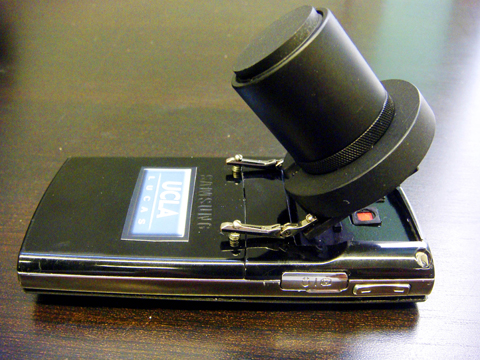
PHOTO: NY TIMES NEWS SERVICE
He has formed a company, Microskia, to commercialize the technology.
The adapted phones may be used for screening in places far from hospitals, technicians or diagnostic laboratories, Ozcan said.
In one prototype, a slide holding a finger prick of blood can be inserted over the phone’s camera sensor. The sensor detects the slide’s contents and sends the information wirelessly to a hospital or regional health center. For instance, the phones can detect the asymmetric shape of diseased blood cells or other abnormal cells, or note an increase of white blood cells, a sign of infection, he said.
Ozcan’s devices provide a simple solution to a complex problem, said Ahmet Yildiz, an assistant professor of physics and molecular cell biology at the University of California, Berkeley.
“This is an inexpensive way to eliminate a microscope and sample biological images with a basic cellphone camera instead,” he said. “If you are in a place where getting to a microscope or medical facility is not straightforward, this is a really smart solution.”
Neven Karlovac, the chief executive of Microskia in Los Angeles, said that some of the company’s products would be adaptations of regular cellphones. For phones without cameras, or phones too compact to modify, the company has different designs, including a simple box with a sensing chip that can be plugged into a cellphone or laptop with a USB cord, he said.
“The idea is to commercialize this low-cost cell imaging and diagnostic platform and apply it to a number of different products,” Karlovac said. The price of the devices has not been set.
Ozcan’s devices are compact in part because they have eliminated the central element in a microscope — its lenses — said David Brady, a professor of electrical and computer engineering at Duke University and director of its Imaging and Spectroscopy Program.
“There’s no need for lenses in these devices because the magnification can be done electronically,” he said. “You don’t need optics at all.”
For this electronic system of magnification, inexpensive light-emitting diodes added to the basic cellphone shine their light on a sample slide placed over the phone’s camera chip. Some of the light waves hit the cells suspended in the sample, scattering off the cells and interfering with the other light waves.
“When the waves interfere,” Brady said, “they create a pattern called a hologram.”
The detector in the camera records that hologram or interference pattern as a series of pixels.
The holograms are rich in information.
“We can learn a lot in seconds,” Ozcan said. “We can process the information mathematically and reconstruct images like those you would see with a microscope.”
Ozcan’s system may someday lead to a rapid way to process blood and other samples, said Bahram Jalali, an applied physicist and professor of electrical engineering at UCLA.
“It is potentially much faster than a microscope,” he said. “You don’t have to scan mechanically” as people must with a microscope with its small field of view.
“It’s a way of looking quickly for a needle in a haystack,” he said.
M. Fatih Yanik, an assistant professor of electrical engineering and computer science at the Massachusetts Institute of Technology, said: “This makes it possible for ordinary people to gather medical information in the field just by using a cell phone adapted with cheap parts.”
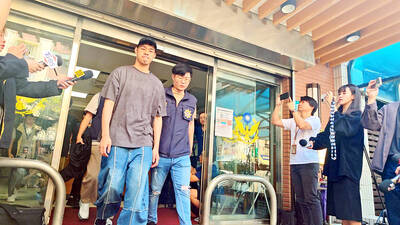
FALSE DOCUMENTS? Actor William Liao said he was ‘voluntarily cooperating’ with police after a suspect was accused of helping to produce false medical certificates Police yesterday questioned at least six entertainers amid allegations of evasion of compulsory military service, with Lee Chuan (李銓), a member of boy band Choc7 (超克7), and actor Daniel Chen (陳大天) among those summoned. The New Taipei City District Prosecutors’ Office in January launched an investigation into a group that was allegedly helping men dodge compulsory military service using falsified medical documents. Actor Darren Wang (王大陸) has been accused of being one of the group’s clients. As the investigation expanded, investigators at New Taipei City’s Yonghe Precinct said that other entertainers commissioned the group to obtain false documents. The main suspect, a man surnamed
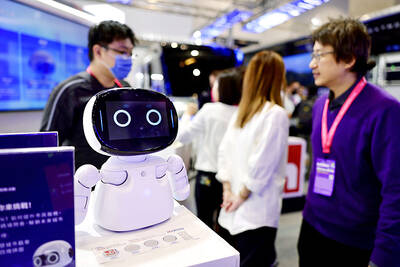
DEMOGRAPHICS: Robotics is the most promising answer to looming labor woes, the long-term care system and national contingency response, an official said Taiwan is to launch a five-year plan to boost the robotics industry in a bid to address labor shortages stemming from a declining and aging population, the Executive Yuan said yesterday. The government approved the initiative, dubbed the Smart Robotics Industry Promotion Plan, via executive order, senior officials told a post-Cabinet meeting news conference in Taipei. Taiwan’s population decline would strain the economy and the nation’s ability to care for vulnerable and elderly people, said Peter Hong (洪樂文), who heads the National Science and Technology Council’s (NSTC) Department of Engineering and Technologies. Projections show that the proportion of Taiwanese 65 or older would
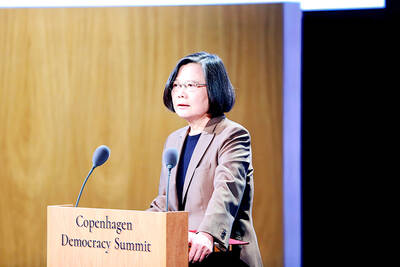
Democracies must remain united in the face of a shifting geopolitical landscape, former president Tsai Ing-wen (蔡英文) told the Copenhagen Democracy Summit on Tuesday, while emphasizing the importance of Taiwan’s security to the world. “Taiwan’s security is essential to regional stability and to defending democratic values amid mounting authoritarianism,” Tsai said at the annual forum in the Danish capital. Noting a “new geopolitical landscape” in which global trade and security face “uncertainty and unpredictability,” Tsai said that democracies must remain united and be more committed to building up resilience together in the face of challenges. Resilience “allows us to absorb shocks, adapt under
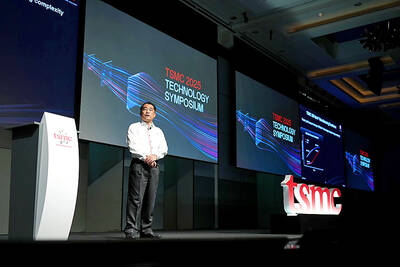
Taiwan Semiconductor Manufacturing Co (TSMC, 台積電) yesterday said it is building nine new advanced wafer manufacturing and packaging factories this year, accelerating its expansion amid strong demand for high-performance computing (HPC) and artificial intelligence (AI) applications. The chipmaker built on average five factories per year from 2021 to last year and three from 2017 to 2020, TSMC vice president of advanced technology and mask engineering T.S. Chang (張宗生) said at the company’s annual technology symposium in Hsinchu City. “We are quickening our pace even faster in 2025. We plan to build nine new factories, including eight wafer fabrication plants and one advanced